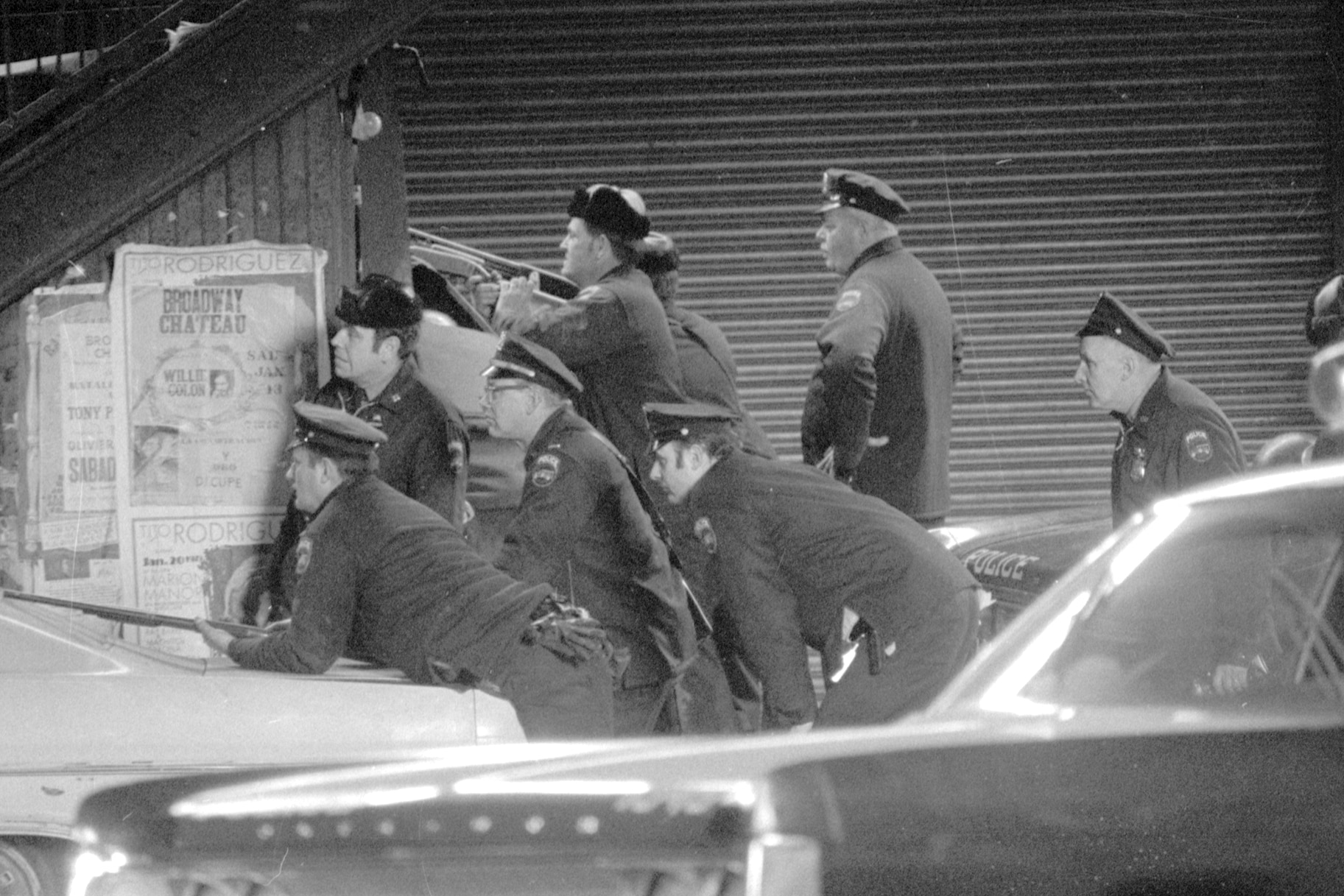Create a free profile to get unlimited access to exclusive videos, breaking news, sweepstakes, and more!
A Look At The 1973 Hostage Situation In Brooklyn Behind The Documentary 'Hold Your Fire'
As shown in the new documentary "Hold Your Fire," Shu’aib Raheem, Dawud A. Rahman, Yusef Abdallah Almussadig and Salih Ali Abdullah tried to steal guns from a Brooklyn sporting goods store in January 1973 but became wrapped up in a days-long hostage situation with police.

It was a hostage situation that changed the way hostage situations are handled.
In 1973, former traffic cop Dr. Harvey Schlossberg managed to convince the New York Police Department to push for more patience with gunmen during a days-long siege in Brooklyn.
The incident marked one of the longest hostage situations in New York City history. It all began after four young Black Sunni Muslims entered a John and Al's Sporting Goods store in the Bushwick neighborhood of Brooklyn in 1973 with the intent of stealing guns for self-defense. But the robbery, revisited in the new documentary “Hold Your Fire,” quickly went awry.
Shu’aib Raheem, 26, led his friends — Dawud A. Rahman, 22, Yusef Abdallah Almussadig, 23, and Salih Ali Abdullah, 26 — to steal guns on Jan. 19, 1973 in an effort to arm themselves against attacks from Nation of Islam members. The NOI was allegedly targeting Sunni Muslims at the time, according to the New York Times, and Raheem had received threats he believed came from the NOI. Plus, on Jan. 18, a family of Sunni Muslims whose patriarch was critical of NOI leadership had been targeted in Washington, D.C., resulting in the deaths of five children and two men, as well the wounding of a woman and a girl, the Times reported.
However, the New York police wrongly assumed that Raheem, Rahman, Almussadig and Abdullah were part of the Black Liberation Army. The cops surrounded the store and a 47-hour siege commenced.
During the siege, bystanders were shot and a police officer was killed. While the documentary credits Schlossberg for de-escalating the situation, the New York Times pointed out that it was both him and the Black community that forced the police to change tactics: after officers threatened to drive a tank into the store, Black community members began protesting.
It was then that police tried Schlossberg’s de-escalation tactics. In previous years, he had pushed for both patience and “crisis intervention therapy” in sieges and suggested that delaying drastic tactics would allow the perpetrators to get to know their victims and, in turn, be less likely to harm them.
The Brooklyn incident ended peacefully when the gunmen surrendered and freed nine hostages.
The four were found guilty on murder, kidnapping and robbery charges in 1974, according to the New York Times. Raheem, who is a prominent voice in the documentary, was paroled in 2010 at the age of 60. Abdullah died in 2020 at the age of 71, after serving more than four decades behind bars. Almussudug was paroled in 1998. Rahman was released in 2019.

























